 |
| Navajo Churro Ewe in front of a handspun and naturally dyed Navajo Woven rug |
It has been another pretty busy week here : Not a lot of dyeing because we had days of 34 degrees Celsius, so I did short bouts of standing near hot dyeing pots, but I did get a lot of spinning done and a lot of prep work for blending and carding. I m trying to spin as much as I can to get heaps of rare breed yarns ready for the Knitters and Crochet guild show in May at the Coburg town hall. It takes a bit of time to spin these yarns, so I basically have to spin year round to get a bit of stock together for the yarn show.
At the moment I am spinning pure angora bunny yarn, some very rare arctic mink and other rare breed yarns. The skeins are multiplying day by day, ready to get their dye bath and wash later. Spinning fine yarn , meaning an equivalent 4 ply or 8ply yarn, which means anything from 200 to 400+ meters per 100grams takes a bit of time ! and I am not even talking about the plying..lol
At the moment I am spinning pure angora bunny yarn, some very rare arctic mink and other rare breed yarns. The skeins are multiplying day by day, ready to get their dye bath and wash later. Spinning fine yarn , meaning an equivalent 4 ply or 8ply yarn, which means anything from 200 to 400+ meters per 100grams takes a bit of time ! and I am not even talking about the plying..lol
First I weigh all the prepared fibres into 50+gram weight, so every skein has more or less the same weight and length. It is easier that way to market and sell it. Easier than having one skein weighing 20grams and others a 100grams. It takes the guesswork on the part of the customer who wants to knit with it out of the equation for sure and just makes it easier to handle. It does add a bit of finnicky weighing and keeping everything organized beforehand, but in the end it is all worth it.
After I spin the singles and make sure that I have a consistency in thickness (more or less, I am only human..lol) I wind the singles off into self centred balls, ready to rest and then ply. I ply the on ball together in its own, by holding the end together with the beginning of the ball. That way you have no “left overs sitting on bobbins, if you would ply two 25grams of singles on different bobbins together. Also, it makes the whole process a bit easier because I never have to really change the bobbin on my spinning wheel.
What else have I been up to? Well, I have made a plan to knit more…I normally do not have a lot of spare time to knit, although I LOOOOVE knitting. That is one of the downsides of not having a 9 to 5 job….it’s kind of like “the barefooted cobblers family” tale, you know: do heaps of crafty stuff to put food on the table but have no time to actually make something for yourself or your family...lol
What else have I been up to? Well, I have made a plan to knit more…I normally do not have a lot of spare time to knit, although I LOOOOVE knitting. That is one of the downsides of not having a 9 to 5 job….it’s kind of like “the barefooted cobblers family” tale, you know: do heaps of crafty stuff to put food on the table but have no time to actually make something for yourself or your family...lol
I am doing some small knitting of hearts because I just love to knit little things like that for gifts , especially when you fill them up with stuffing and a tablespoon full of dried lavender flowers. They are also great by the way to put in with your clothes or in your drawers. It smells super nice and it keeps the beasties away ! I started knitting these little hearts after I had a cardiac arrest in 2019 and had to have a pacemaker implanted, taking me one step further to becoming a bionic human…lol Somehow knitting these little hearts relaxes me..at least , when I find the time to get started !

If you would like to knit some hearts..it is almost Valentines day after all…there is a wonderful little, free and easy pattern on Ravelry: Pattern: Doreen Blask ❤️
https://www.ravelry.com/patterns/library/knit-hearts-to-be-my-valentine
It’s been a while since I knitted a whole jumper but I am determined to do this new cute and easy one from Joji Locatelli: Marble Mount , a circular yoke jumper with flair. The pattern is available with 25% off on her website til January 28th.
I have also downloaded her “all together” jumper which is a colourwork pattern FREE! So I am tossing up which one to start first! Why not start both at the same time? Or maybe that is a bit too eager?
Here are the links to her website for the jumper patterns:
https://www.jojiknits.com/product-page/marble-mount-pullover

https://www.jojiknits.com/product-page/all-together-sweater

Time for this week’s fibery offerings : Navajo Churro tops !

Time for this week’s fibery offerings : Navajo Churro tops !
You may know I have a soft spot for Navajo Churro sheep and the navajo rugs. Spending a substantial time of my childhood spinning and seeing rugs being woven and the stories being told, and then spinning, weaving and telling stories too. I guess that is what is really the most important: the stories that are so intrinsically woven into the yarn and the rugs and the making of warps and baskets.
It is not only a craft , but also a way of translating how we look at the world and incorporate its magic into a two dimensional framework.
Of course sitting at a large loom , exposed to the elements , is never an extremely good idea when a big lightning storm hits, but you see how it all interweaves into ones life. Everything has a meaning, everything around you is transformed and has its own magic. Just look at how the corn rug below resembles reality...abstract and yet so similar.
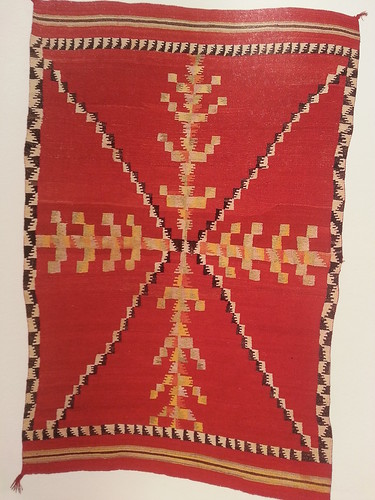
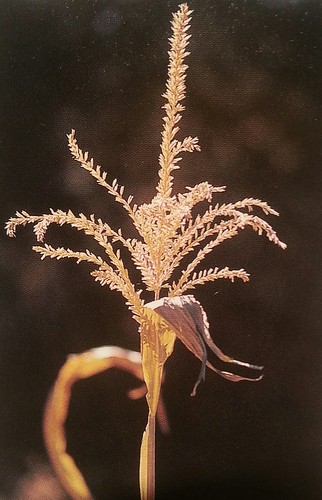
There are so many things going on in a navajo rug, whether it be something minuscule woven into certain spots like a feather into a horse blanket to make sure that the horse is fast as an eagle, or bits of hair or plants, all have their meaning.
In the old days , the midwife collected corn pollen and then a horny toad was found and the pollen was put on its head and mouth. It was an extremely good omen that the toad spat out the corn mush and often that is why these kinds of ceremonial birthing rugs have yellow woven in to them, much like this one here, my family heirloom:
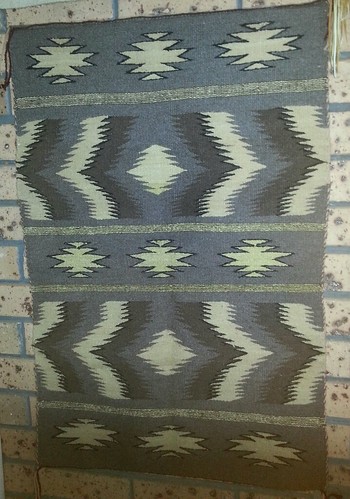
It is not only a craft , but also a way of translating how we look at the world and incorporate its magic into a two dimensional framework.
Even the way that we see looms are different: the ropes to hold the warp threads are the thunder and the the warp itself is the rain falling down from heaven to earth. I was always taught never to weave when there was a lightning storm because of that.
Of course sitting at a large loom , exposed to the elements , is never an extremely good idea when a big lightning storm hits, but you see how it all interweaves into ones life. Everything has a meaning, everything around you is transformed and has its own magic. Just look at how the corn rug below resembles reality...abstract and yet so similar.


There are so many things going on in a navajo rug, whether it be something minuscule woven into certain spots like a feather into a horse blanket to make sure that the horse is fast as an eagle, or bits of hair or plants, all have their meaning.
In the old days , the midwife collected corn pollen and then a horny toad was found and the pollen was put on its head and mouth. It was an extremely good omen that the toad spat out the corn mush and often that is why these kinds of ceremonial birthing rugs have yellow woven in to them, much like this one here, my family heirloom:

For the traditional Navajo family, the Holy People who created the Navajo were very powerful deities.
They traveled on the “sun’s rays” and descended into the world on “lightning bolts.” It was Changing Woman who taught the Navajo how to live in “harmony,” but it was Spider Woman who gave them secrets to find their way in this world. To the traditional Navajo weaver, Spider Woman provided the framework to live and weave beautiful things – the essence of being Navajo. Prior to 1900, old Navajo wearing blankets often carried symbols or motifs that were attached to the teachings of Spider Woman.
Perhaps the symbol or motif that dominated those early blankets was the cross. Many Navajo grandmother will tell you that crosses represent Spider Woman. The symbol of Spider Woman was given to the earliest weavers to remember her teachings and wisdom. For some weavers, placing the symbol of Spider Woman (crosses) within a graphic form of a diamond, triangle or square was risky business. Spider Woman was not of this world and her spirit should not be entrapped within the form. Therefore in some Navajo weavings, the cross will have an actual hole or sometimes a graphic hole in the cross.

Perhaps two of the earliest design elements to be utilized by Navajo weavers are the diamond and the triangle. These elements were incorporated into old wearing blankets and continue in the modern day Navajo rugs. Many Navajo grandmothers will tell you that the diamond is a symbol of the Dinétah or Navajo homeland with its four sacred corners that are marked by the four sacred mountains. Triangles are basic building blocks of Navajo design. Placed on top of each other, triangles can become a series of prayer feathers or songs or become the backbone of a mountain Yei figure.

Perhaps two of the earliest design elements to be utilized by Navajo weavers are the diamond and the triangle. These elements were incorporated into old wearing blankets and continue in the modern day Navajo rugs. Many Navajo grandmothers will tell you that the diamond is a symbol of the Dinétah or Navajo homeland with its four sacred corners that are marked by the four sacred mountains. Triangles are basic building blocks of Navajo design. Placed on top of each other, triangles can become a series of prayer feathers or songs or become the backbone of a mountain Yei figure.
After the year 1900, the “spirit line” became a popular element for many traditional Navajo weavers. This occurred because traders requested weavers to place borders around their weavings. By this time, most weavers were selling their weavings through the trading post system. The traditional weaver became very concerned about trapping their creative spirit within the weaving and not being able to weave in the future. The “spirit line” is a small strand of yarn of contrasting colour that flows from the inner design element of the weaving to the outer edge. The custom continues today in many contemporary Navajo rugs.
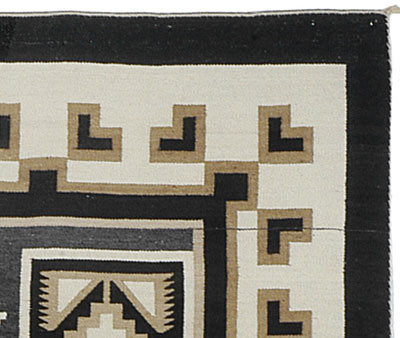 the spirit line (close up)
the spirit line (close up)
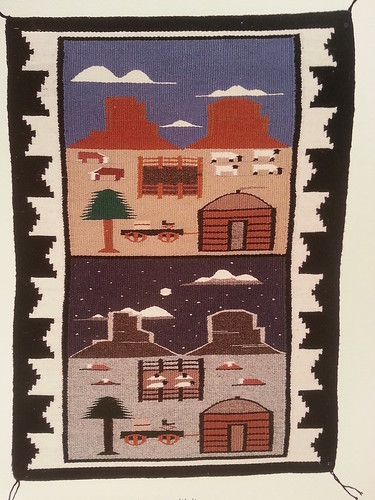
 the spirit line (close up)
the spirit line (close up)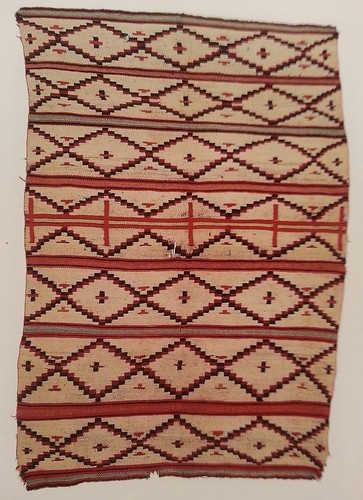 |
| Early precious Navajo rug with Spider woman crosses |

"Night times; daytime rug" pictoral Navajo Rug
Weaving and spinning yarn is more than just a craft to me and the Navajo people. It is an expression of culture. The yarns are used to weave the rich history and tell the stories and this history is passed down from generation to generation. There was lots of trade between the Aztec, Mixtec and Navajo people, and the weaving tradition of the Navajo was certainly influenced by it.
The rugs sing a song, tell a story and that is what makes them so magical. If the past and the stories are forgotten, then the rugs won’t mean anything. Not only are there rugs but also other items that are woven : baskets and so called Tump line weavings ( an object woven with a warp of Agave and wool or just agave fibres) , worn over the head to help carry heavy loads) Here is a photo of one that survived from the pre-columbian times (= pre 1500s)
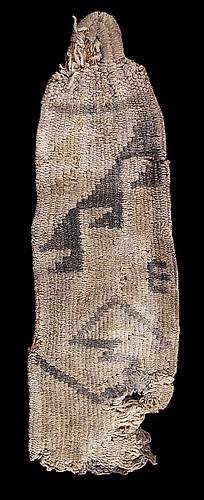







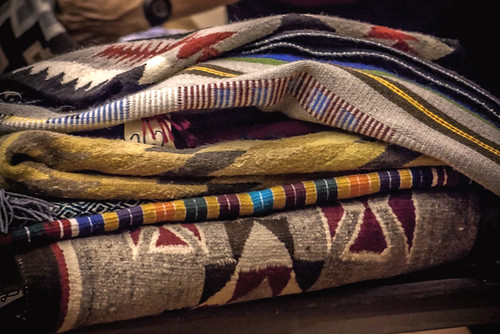
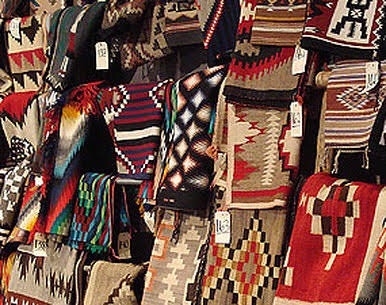

The rugs sing a song, tell a story and that is what makes them so magical. If the past and the stories are forgotten, then the rugs won’t mean anything. Not only are there rugs but also other items that are woven : baskets and so called Tump line weavings ( an object woven with a warp of Agave and wool or just agave fibres) , worn over the head to help carry heavy loads) Here is a photo of one that survived from the pre-columbian times (= pre 1500s)

But now back to the Navajo Churro tops I offer you today. I have offered them before way back when I first started in 2004, and after that in my Viva Frida blend where I blended the Churro with agave cactus and cashmere and angora. This time I wanted to keep it pure, because the quality was just so amazing ! It took the dye so well too.
Navajo Churro sheep are very special just like the history they have : The Navajo call them "the Old Ones" and see the Churro sheep as a gift from the Gods.
The wool from these sheep are the basis of the Navajo Weaving and also is a wonderful fibre to make socks and ponchos.
The sheep were nearly wiped out during the tribe's forced relocation in the 1860s and again in the stock reductions of the 1930s: federal agents just went from hogan to hogan and shot a large percentage of the livestock and horses, more than 250.000 animals were killed and the Churro sheep were almost extinct with fewer than 700 head by 1990! But they are making a comeback, due to the efforts of the Navajo Sheep Project so they can return to their historic place and purpose among the Navajo and that it can benefit the Navajo People.
The Churro sheep have been very important to the Navajo people:
To quote “A Short History on Navajo-Churro Sheep” by Diné be’iiná:
Diné philosophy, spirituality, and sheep are intertwined like wool in the strongest weaving.
Sheep symbolize the Good Life, living in harmony and balance on the land. Before they acquired domesticated sheep on this continent, Diné held the “Idea of Sheep” in their collective memory for thousands of years.
While wild mountain sheep provided meat and the Diné gathered wool from the shedding places, that species of sheep in North America did not have herding behavior that permits domestication. As a result, the Diné asked their Holy People to send them a sheep that would live with them and with care provide a sustainable living.”
To quote Robert Moor, “On Trails”
“For centuries, that gift has shaped Navajo culture, just as water sculpts a canyon. Navajos’ internal clocks were set to the daily schedule of herding, and their calendars were structured by the seasonal migration. The introduction of wool radically altered their material culture, by providing the means to weave lightweight clothing, warm blankets, and intricate rugs. Their architecture was fortified by the need to protect sheep from raiders. Pastoralism altered their diet, their relationship to the landscape, and perhaps even their metaphysics.
One Navajo woman told the author Christopher Phillips that herding sheep informed her understanding of the sacred Navajo principle of hózhó, or harmony.
“The sheep care for us, provide for us, and we do the same for them. This contributes to hózhó. Before I tend my sheep each day, I pray to the Holy People, and give thanks to them for the sheep and how they help make my life more harmonious.”

At the beginning of the nineteenth century, the Navajo were wealthy and successful pastoralists, with orchards, irrigated fields, and large herds of livestock.
The latter were primarily Churra-type sheep, now called Navajo-Churro sheep, originally obtained by raids and by trading with Spanish colonizers.
In 1846, with the encroachment of American settlers on Navajo lands, that way of life was brutally disrupted. Kit Carson’s militia viciously terrorized the Navajo, burning orchards, destroying crops, and killing sheep, culminating in The Long Walk of 1864-1866 during which nearly 10,000 Navajo people were forced to march on foot more than 300 miles to an American internment camp at Fort Sumner/Bosque Redondo.
Some Navajo were able to escape the roundups by hiding in canyons and other remote areas. Amazingly they were also able to hide small herds of Churro sheep, a sure-footed and hardy breed that was well-suited to survival in tough environments.
After four years as “prisoners of war,” the Diné returned home and began to rebuild both their herds and their Nation. By 1890 the Diné reportedly already had 1.6 million sheep and goats.
Between 1870 and 1930, the Diné population quintupled, thanks in part to a protein-rich diet of lamb and mutton. Given that this is the period during which the overall population of Native Americans in the United States reached an all-time low, it was a remarkable achievement.
Sadly this period of rebuilding would lead to more pain and frustration for the Navajo people. When Navajo lands began to show signs of environmental distress, federal agents attributed this to overgrazing, and refused to listen to competing theories of cause. We now know from tree-ring data that the primary factor was climate change: a decades-long dry spell, followed by an unusually wet period.
“This dry-then-wet pattern encouraged arroyo erosion and sand-dune formation—a geomorphologic cycle that had happened many times before in this sandstone-dominated landscape.”
The huge Navajo herds of goats, sheep, and horses certainly did not help. But what followed was a catalogue of abuse in the name of “the environment.”
The Bureau of Indian Affairs instituted a herd reduction program from 1933 through to the mid-1940s. Heavy-handed federal interventions included indiscriminate slaughter of Navajo livestock, and mandated maximum herd sizes, all without adequate compensation.
As described in “A Short History on Navajo-Churro Sheep” by Diné be’iiná
“Government agents went from Hogan to Hogan, shooting a specified percentage of the sheep in front of their horrified owners, who love their sheep and regard them as family members. First to be shot were the Churro, because the agents thought this hardy breed was ‘scruffy and unfit.’ Today, elders tearfully recall that time and can describe in detail each sheep that was killed and the exact location of the massacre.”
Not surprisingly given the flawed understanding of the causes behind the deterioration, and the draconian way in which herd reduction was implemented, range conditions only worsened, the reservation reached an ecological tipping point, and by the end of the program, to quote historian Jared Farmer,
“the tribal economy was in ruins. Unemployment, indebtedness, poverty and alcoholism ravaged Diné Bikéyah.”
The legacy of the US Government’s destructive “reservation” program persists to this day. The Navajo are a nation of 175,000 people in 46,000 households, primarily in the state of Arizona – I quote US not for profit Prosperity Now:
“The basic needs of residents within the Navajo Nation are not met: 35% of residents do not have access to running water, 15,000 people do not have electricity and residents must drive for hours in order to reach the nearest hospital or grocery store” – not to mention water supply. Some 35.8% of Navajo households have incomes below the federal poverty threshold, compared to 12.5% for Arizona as a whole. One in two do not have sufficient liquid assets to subsist for three months without income; and they have higher rates of chronic illness, lower life expectancies, and lower rates of insurance than the national average. Less than 9% of the Navajo population over the age of 25 have had the opportunity to access a four-year college degree, compared to 30% for Arizona as a whole, and 16% are unable to find employment, compared to a state average of 5%.
In the last two years, with the COVID pandemic raging through the world, the Navajo Nations people have lost a lot of people and lots of churro sheep lost their shepherds. More and more , everybody who is involved as a farmer or trying to make a living with creating fibre, are told by big industry that some rare breeds, like the Navajo Churro, are unsuitable and have no place in the national or global market.
I am just going to say that right here and right now as I have always done…this stance the big industry is taking, in my humble point of view, is total and absolute BS.
I can say this of course because I have never ever listened to so called “GLOBAL” industry or even bigger processing companies, who always want to steer a breeder towards something that is easy to process and fast.
Our perception , even as crafters, has been extremely influenced by their view that everything needs to have a white base (One colour to process is easier than a few mixed colours because every time the machines need to be cleaned etc etc), needs to be fine (but not too fine because if it is too fine some machines cannot take it either and it has to be wooshed off to Italy to be processed…talk about “the Goldie lock “ principle , well that is it isn’t it?)….. Whereas I, as a weaver, spinner, dyer and breeder, love the diversity of colour.
The way that the dye plays with fleeces that have different colours going through them is like how sunlight and shadows play with what we see in nature. Definitely much more interesting than a “flat white”.
Strangely enough, I have found in my 18 years of trying to make a living from my fibre art, that big industry is trying to copy what handspinners have been doing for a long time: spin yarn that have a more “natural” look or spinning so called “zebra” yarns (different shades of white and grey and black)… But I digress…..lol Back to the struggle of the Navajo People and the Churro sheep:
In 2019, a handful of Diné shepherds felt lucky to be paid 1 to 5 cents per pound for their Navajo-Churro wool; others weren’t as fortunate. “Our Navajo-Churro wool was kicked away,” said one Navajo shepherd , as tears fell down his cheeks. “The traders tell us our wool is worthless and that we need to start crossing our sheep with fine wool rams.” We can make a difference as crafters and artists! Not only can we help by helping the small farmers survive and letting rare breeds with all their different qualities survive, but also say to the big, unsustainable and wasteful fashion industry, that we are not falling for it anymore.
Support small farms, support diverse culture, share and create.
Please don’t let anybody tell you that everything needs to be super fine and soft for it to be beautiful or useful: I call that fibre racism.
So much beauty can be made from rare sheep breeds. And, so much history can be lost by dismissing their fleece and the shepherds who take care of the sheep.
Things are starting to change. Navajo co-ops are starting with small processing mills and selling their own yarns.
Small and sustainable has always been my philosophy as well. It is part of who I am and my ancestors speaking through me.
I have recently gone through some very old albums and found some beautiful old photos, some more than 100 years old. Here are some I gladly share with you.









Navajo rugs take a loooong time to make.
Lots of them are sold by traders, while the weavers themselves are not given the money needed to survive.
There is a wonderful initiative : the adopt an elderorganisation, who does not only support those who are doing it extremely tough but also provide them with the opportunity and funds to keep telling their stories.
If you would like to purchase a handwoven Navajo Rug, please check out their website here:
https://www.anelder.org/Navajo-Rugs-and-Jewelry
So, what exactly is a Navajo Churro breed sheep? : The Navajo-Churro sheep is a small, long tailed sheep with a double coat of wool. The locks are long, tapered and open. Legs and faces of adults are free of wool. The sheep have a strong flocking instincts and are very intelligent. Most Navajo-Churro are a-seasonal breeders and mature early so two lamb crops per year are likely if rams are left with the ewes year round. The ewes lamb easily and are fiercely protective. Twins and triplets are not uncommon. Ewes seldom require assistance of any kind in lambing. Both ewe and lamb seem to know each other instantly. The lamb suckles within 10-15 minutes and is ready to travel by the mother’s flank within that same short time.
These sheep with their long staple of protective top coat and soft undercoat are well suited to extremes of climate. The Navajo-Churro is highly resistant to disease, and although they respond to individual attention, they need NO pampering to survive and prosper.

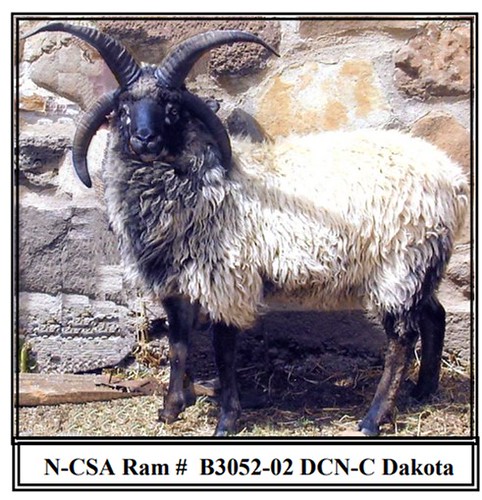

A finely prepared top of the Navajo Churro undercoat, around 23micron!






The hand dyed tops that I am offering you here are blends of the undercoat of the Churro sheep it makes for the most wonderful yarn, suited for socks and outerwear as well as sweaters.
It is easy to spin and also beautiful to weave with to tell your stories. The wool is classified as “coarse” but that needs a bit of explaining !
The Navajo sheep fleece is composed of 3 distinct types of fibre: inner coat, outer coat and kemp. The fleece is open and has no defined crimp. The inner coat measures 6 to 12cm and generally ranges from 10-35 microns while the outer coat 12cm-24cm″, and is generally above 35 microns.
The tops I have on offer tonight range are an amazing 23microns and have a gentle sheen.
Axéhéé (thank you in Dineh language) for your support!
Don’t hesitate to contact me at any time if you have any questions okay? Always happy to enable.
All my contact details are to be found at the end of this week’s blog entry.
Navajo Churro Tops
A finely prepared top of the Navajo Churro undercoat, around 23micron!
beautiful to spin and wear!
+/- 100+ grams AU$23
 |

Natural. 10 available
 |

Crocus. 4AVAILABLE
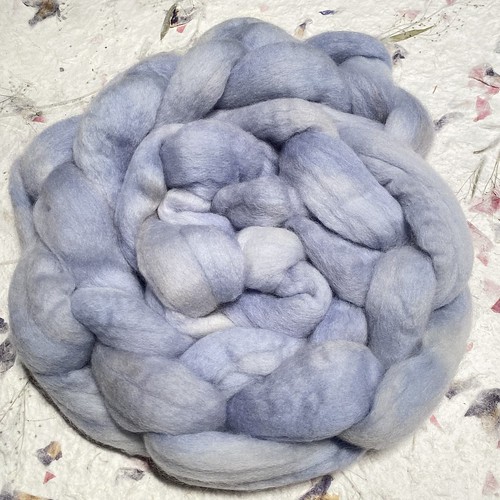 |

Periwinkle (the Colour of the year: a gorgeous blue lilac lavender colour). 1 available
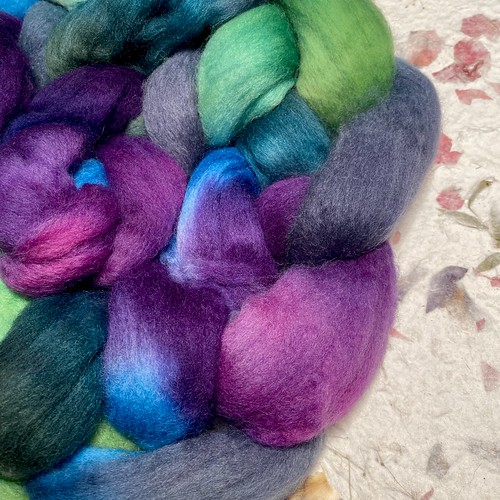
 |

Wilderness people 5 AVAILABLE

 |

Star Dust
SOLD

SOLD
 |

Area 51. 4 AVAILABLE

 |

Swan Lake. 4 AVAILABLE

 |

Dragonfly in Amber. 3 AVAILABLE

 |

Gem Corn Magic. Sold

 |

Rainbow Dreams
Sold
 August 2021 Fibre Club
August 2021 Fibre Club
 Aug 21 batt club
Aug 21 batt club
 August 2021 Yarn Club
August 2021 Yarn Club
 June 2021Club
June 2021Club

 June 2021Club
June 2021Club
Note to all International club members:
All international club parcels are now being shipped with tracking and expedited.
There is an option if you want all three of your clubs to be shipped together to save on shipping cost: Just ask me for a postage quote !
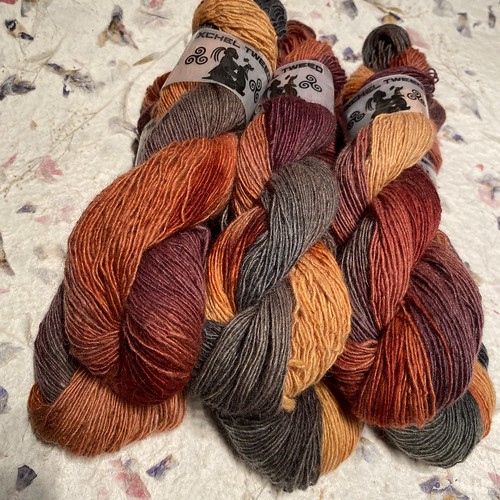
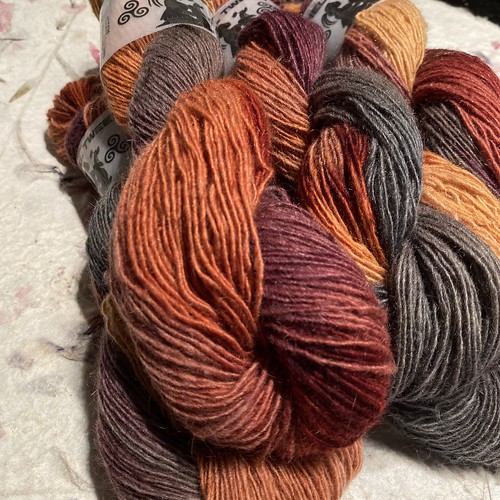
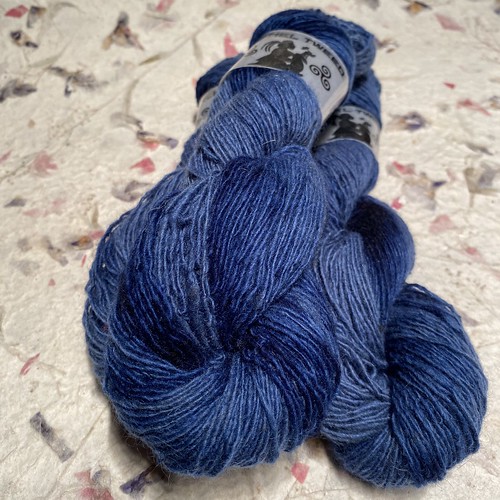






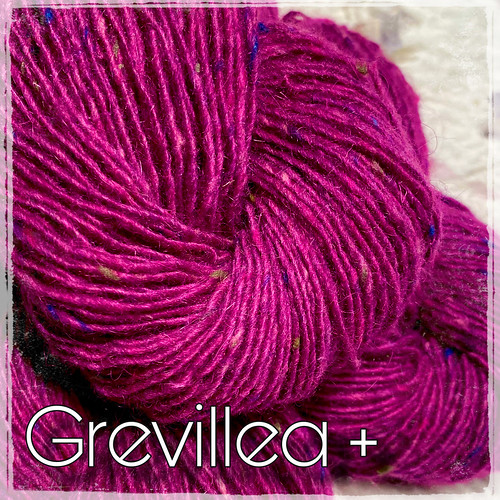

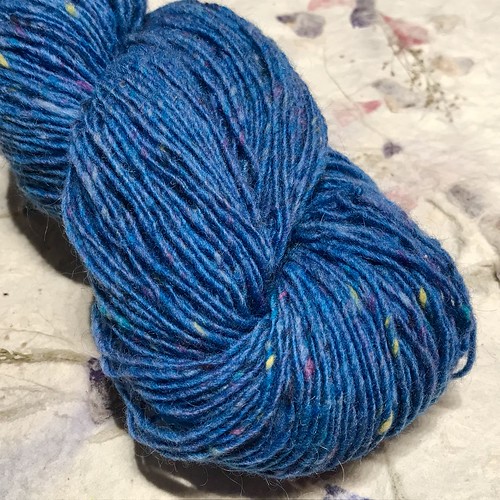
Sold
IxCHeL club sign ups for
April, May, June 2022
are now open !
Here are some photos of the previous clubs:
 August 2021 Fibre Club
August 2021 Fibre Club Aug 21 batt club
Aug 21 batt club August 2021 Yarn Club
August 2021 Yarn Club June 2021Club
June 2021Club
 June 2021Club
June 2021ClubNote to all International club members:
All international club parcels are now being shipped with tracking and expedited.
There is an option if you want all three of your clubs to be shipped together to save on shipping cost: Just ask me for a postage quote !
IxCHeL Fibre Club April, May and June 2022
The subscription is for a period of three months and you will receive one special hand dyed and special blended top/roving per month
All the tops will be hand dyed and will be especially made for the members of IxCHeL Fibre Club ! Price to join the IxCHeL Fibre Club #51 and receive your special hand dyed top :)) for three months (April, May and June 2022 ) is AU$78 + postage (parcel post or airmail). AND there are good value double and triple serves available !!!
For Australia : single serve $78+$30 postage (parcel post), double serve $150(save $6) +$30m postage or triple serves $225 (save $9!) + $30 postage
For New Zealand : single serve $78+$45 postage (parcel post) double serve $150(save $6) +$45 postage
For New Zealand : single serve $78+$45 postage (parcel post) double serve $150(save $6) +$45 postage
For USA + Canada: single serve AU$78+AU$60 (Airmail) double serve AU$150+AU$60; triple serve $225 (save $9) + AU$60postage
For UK,Europe, rest of the world: Single serve AU$78+AU$78 (airmail) Double serve AU$150+AU$78; triple serve $225 (save $9) + AU$78postage
For Asia: Single serve AU$78+AU$57 (airmail) Double serve AU$150+AU$57; triple serves $225 (save $9) + AU$57postage
If you want to receive a fibre surprise every month then join the IXCHEL FIBRE CLUB #51 now. Numbers are strictly limited ! Payment via direct deposit or credit card or paypal. Just PM or email me your details.
The IxCHeL Yarn Clubs April, May and June 2022
Every month for three months (April, May and June 2022 ) you will receive: enough hand dyed luscious yummy yarn to make a pair of socks or a lush shawl or scarf of course! (the hand dyed yarn will be exclusive for the Ixchelbunny SOCK-IT-TO-ME Yarn CLUB and will range from a sock weight yarn (a 4ply/fingering weight yarn); Every month a sock or scarf pattern, tips and instructions ! Now is that GOOD or is that GOOD ??!
I will even offer a double serve for those of you who like their socks or scarves extra long !
For Australia : single serve $96+$30 postage (parcel post) double serve $177( save $15!!) +$30 postage
For New Zealand : single serve $96+$45 postage (parcel post) double serve $177( save $15!!) +$45 postage
For USA + Canada: single serve AU$96+AU$60 (Airmail) double serve $177 (Save $15!!) +AU$60
For New Zealand : single serve $96+$45 postage (parcel post) double serve $177( save $15!!) +$45 postage
For USA + Canada: single serve AU$96+AU$60 (Airmail) double serve $177 (Save $15!!) +AU$60
For UK,Europe, rest of the world: Single serve AU$96+AU$78 (airmail) Double serve $177 (Save $15!!) +AU$78
For Asia: Single serve AU$96+AU$57 (airmail) Double serve $177 (= Save $15!!!) +AU$57
Numbers are strictly limited !
Payment via direct deposit or credit card or paypal . Just PM or email me your details
By the way: you don’t HAVE to knit socks if you don’t want to.. the hand dyed yarn is amazingly nice for scarves, cowls, beanies and even tops ! Anything goes Payment via direct deposit or credit card or paypal. Just PM or email me your details
IxCHeL Funky Bunny Batt Clubs April, May and June 2022
Here are all the details. Just pm me when you have any questions or want to be part of the funky bunny batt club Movement ;-) Welcome to the blingy dark side ;-D
The subscription is for a period of three months and you will receive one special hand dyed funky bunny batt per month to the value of AU$40 or more .
The batts will range in weight from 140grams to 170grams with luxury fibres like camel , angora, cashmere, silk, yak, llama even wallaby and bison, and rare breeds !!!! All the batts will be hand dyed and will be especially made for the members of IxCHeL funky bunny Club ! Every month you will receive a HUGE luxury funky bunny batt !
Sign up now and you will receive an IxCHeL Hand dyed , super luxurious funky bunny batt for April, May and June 2022
Price to join the IxCHeL Funky bunny for three months is :
For Australia : $114+$30 postage (parcel post)
For New Zealand : single serve $114+$45 postage (parcel post)
For USA + Canada: AU$114+AU$60 (Airmail)
For New Zealand : single serve $114+$45 postage (parcel post)
For USA + Canada: AU$114+AU$60 (Airmail)
For UK,Europe, rest of the world: AU$114+AU$78 (airmail)
For Asia: AU$114+AU$57 (airmail)
If you want to receive a fibre surprise every month then join the IXCHEL FUNKY BUNNY BATT CLUB now.
Numbers are strictly limited !
Payment via direct deposit or credit card or paypal. Just PM or email me your details.
To become a member just email me on ixchelbunnyart at gmail dot com or message me on facebook or Instagram. More on how to order the clubs and anything from this update later in the blog in the section “how to order”
IxCHeL Tweed Yarn
Hand dyed
Super soft lambs wool 70% and Kid Mohair 30%
Spun singles, fingering or sock weight yarn
+/- 200meters/218yards
50grams 1.76oz
AU$18
+/- 200meters/218yards
50grams 1.76oz
AU$18


Botanical dyes
(dyed with Eucalypt, Madder root, Walnut, Elderberry, Indigo,Acorn)


Indigo


Jewels
NEW colours !!!
IxCHeL Tweed Yarn
Super soft lambs wool 70% and Kid Mohair 30%
Spun singles, fingering or sock weight yarn
+/- 200meters/218yards
50grams 1.76oz
AU$16


Nephrite Jade
(A beautiful deep sage green colour with fun blue, lime and salmon speckles)
SOLD
Making new batch soon!


Grevillea + new !
A vibrant raspberry pink tweed with deep purple, lime and soft pink speckles)
IxCHeL Tweed fingering weight yarn
Super soft lambs wool 70% and Kid Mohair 30%
Spun singles, fingering or sock weight yarn
+/- 200meters/218yards
50grams 1.76oz
AU$16


Great Barrier Reef




Leafy Seadragon




Flying Fox
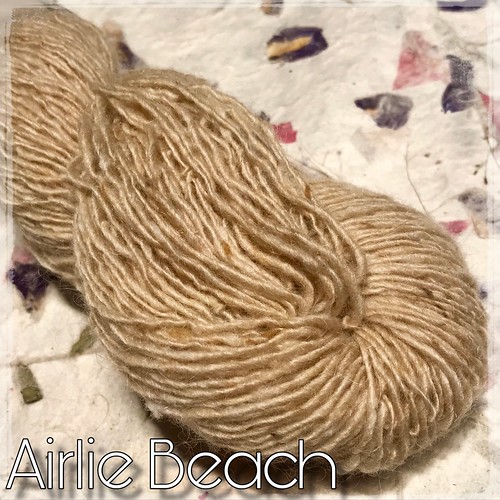



Airlie Beach




Sea Mist





Amethyst


 Kata Tjuta BACK IN STOCK !!!
Kata Tjuta BACK IN STOCK !!!
(an intense pure red that goes well with the Kookaburra and the Wattle and the Amethyst colourway and soooooo many others)

 Kookaburra
Kookaburra
(a beautiful silver grey with ochre accents that complement the dingo colourway)

 Dingo
Dingo
( A beautiful warm honey ochre with pops of royal bluebell, kingfisher and kangaroo paw)

 Dusky Grevillea
Dusky Grevillea
(a gorgeous raspberry base with pops of royal bluebell, flowering gum, grey and daintree)


 Fern Forest
Fern Forest
( a deep forest green with accents of bright red, dusky purple and daintree) )

 Jacarandah
Jacarandah
( a fabulous deep purple with accents of royal bluebell, daintree, grevillea and kingfisher )

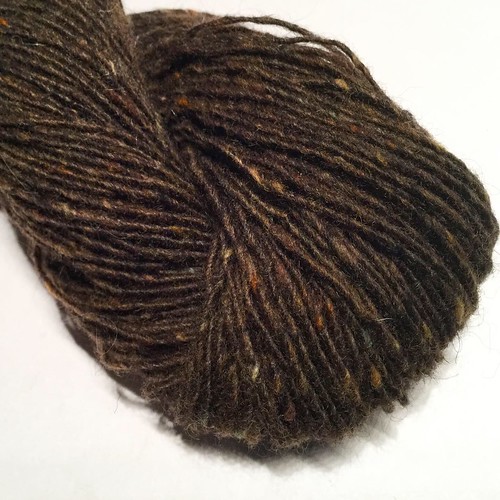 Wombat
Wombat
( a fabulous deep walnut brown with accents of dingo and kookaburra)

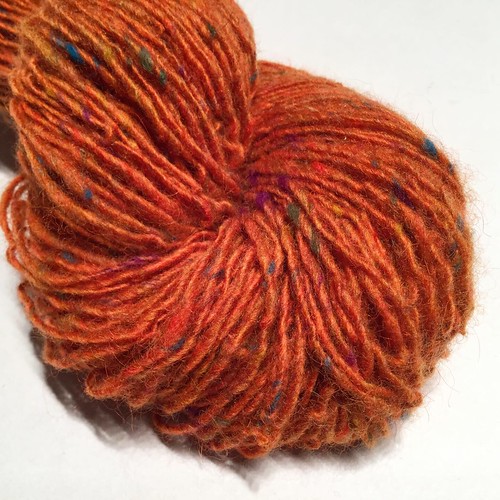 Kangaroo Paw
Kangaroo Paw
( a fabulous warm orange with accents of fern forest, royal bluebell and grevillea and dingo )


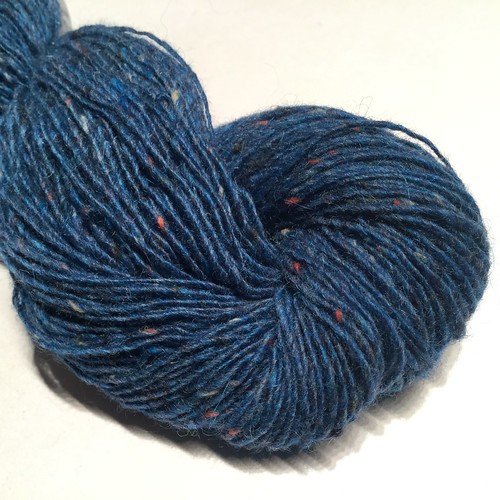 Royal Bluebell
Royal Bluebell
( a deep blue with accents of flowering gum, kookaburra and fern forest )

 Wallaby
Wallaby
( a warm light brown with accents of soft blue and kookaburra)

 Daintree ( a soft green with accents of fern forest and dingo)
Daintree ( a soft green with accents of fern forest and dingo)
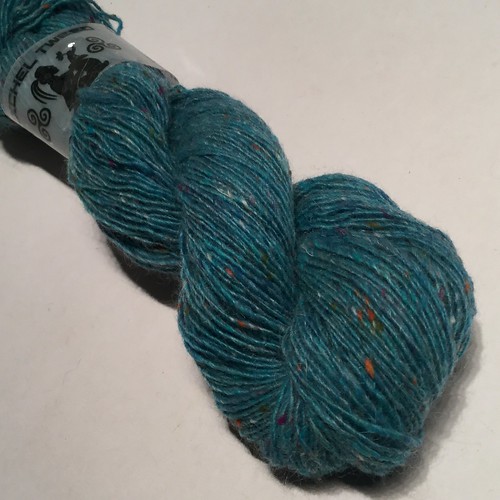
 Kingfisher
Kingfisher
( a fabulous Turquoise blue with accents of fern forest, kangaroo paw, Jacaranda and Grevillea)

Want to dye your own with easy to use acid dyes? I have been selling these Landscape dyes at my workshops and shows for a long time : They are extremely easy to use and come in great shades.

Wattle
(A beautiful sunshine yellow that goes so well with the kookaburra the silver grey)
(A beautiful sunshine yellow that goes so well with the kookaburra the silver grey)

 Kata Tjuta BACK IN STOCK !!!
Kata Tjuta BACK IN STOCK !!!(an intense pure red that goes well with the Kookaburra and the Wattle and the Amethyst colourway and soooooo many others)

 Kookaburra
Kookaburra(a beautiful silver grey with ochre accents that complement the dingo colourway)

 Dingo
Dingo( A beautiful warm honey ochre with pops of royal bluebell, kingfisher and kangaroo paw)

 Dusky Grevillea
Dusky Grevillea(a gorgeous raspberry base with pops of royal bluebell, flowering gum, grey and daintree)

Flowering Gum
( a gorgeous medieval warm red with bright red, kookaburra and fern forest accents)
( a gorgeous medieval warm red with bright red, kookaburra and fern forest accents)

 Fern Forest
Fern Forest ( a deep forest green with accents of bright red, dusky purple and daintree) )

 Jacarandah
Jacarandah ( a fabulous deep purple with accents of royal bluebell, daintree, grevillea and kingfisher )

 Wombat
Wombat( a fabulous deep walnut brown with accents of dingo and kookaburra)

 Kangaroo Paw
Kangaroo Paw ( a fabulous warm orange with accents of fern forest, royal bluebell and grevillea and dingo )

isn’t it gorgeous how the Kangaroo paw knits up?! )

 Royal Bluebell
Royal Bluebell ( a deep blue with accents of flowering gum, kookaburra and fern forest )

 Wallaby
Wallaby( a warm light brown with accents of soft blue and kookaburra)

 Daintree ( a soft green with accents of fern forest and dingo)
Daintree ( a soft green with accents of fern forest and dingo)
 Kingfisher
Kingfisher ( a fabulous Turquoise blue with accents of fern forest, kangaroo paw, Jacaranda and Grevillea)
(Out of stock but more coming soon !)
Landscape dyes

100g tubs AU$12
250 g tubs AU$27
250 g tubs AU$27
Just contact me with the name of the colour you are after and I will get right back to you.
All my contact details are here:
Please don't hesitate to contact me at any time if you have any questions okay? Any questions about custom orders: spinning or dyeing orders: Always happy to enable.
How to Order: email or message me on facebook, Ravelry or Instagram, quoting how many tops, yarns or clubs you would like, together with your postal and email address and I will get right back to you with all your order and payment details.
1. You can email me on ixchelbunnyart at gmail dot com or ixchelbunny at yahoo dot com dot au
2. Message me on facebook or
3. Message me on www.ravelry.com where I am ixchelbunny.
4. message me on Instagram where I am @ixchelbunny
2. Message me on facebook or
3. Message me on www.ravelry.com where I am ixchelbunny.
4. message me on Instagram where I am @ixchelbunny
Shipping : I am still working and mailing the parcels out fast as humanly possible :-) All orders received and paid for of the Friday updates, will be shipped first thing monday morning. We do daily post office runs (if necessary). The recent AusPost changes to parcel pickups from businesses therefore does not apply to us because WE deliver your parcel directly to our nearest AusPost hub.
Seeing that there are currently lots of Covid cases, especially in NSW ain VIC, there can be some AusPost sorting centres that do not have enough staff so there will be delays in getting the parcel to you. As soon as your parcel is shipped you will receive an automatic email from AusPost with the tracking number so you can see where your parcel is and the approximate ETA.
Overseas deliveries are highly impacted by the very low amount of planes out of Australia t the moment and the very high pressure on AuPost. Please be patient during these pandemic times. We do our utmost to keep everything running smoothly on our end and if you have any questions: please do not hesitate to ask. Always happy to help!
Stay safe!
Keep crafting !
Be Happy !
Stay Awesome !
Keep your eyes out for any news on the
ixchelbunny Instagram feed and the IxCHeL facebook page!!
Show the Love and Follow me on Instagram
RABBIT ON !
((hugs))
Charly



